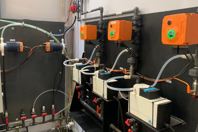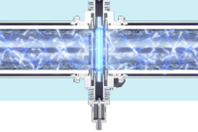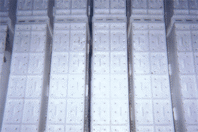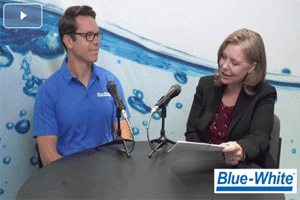WASTEWATER DISINFECTION RESOURCES
-
In an era where waterborne pathogens are evolving and regulatory standards are tightening, the role of supplementary disinfection in water treatment for municipal operators and industrial facility engineers has never been more crucial.
-
In this case study, read about a successful pilot test in Long Island, New York, removing 1,4 dioxane from water. The technology used offers improved efficiency, reduced maintenance, and ongoing monitoring for reliable water treatment.
-
Atlantium Technologies installed a HOD UV system at a North American baseload generation facility to replace GAC filters and provide efficient and effective water treatment. The system ensures low chlorine concentration and reduces bacterial growth.
-
In this case study, learn how a cottonseed processing facility in Texas successfully prevented biofouling in their RO membrane filtration system by installing the HOD UV technology from Atlantium.
-
In this case study, learn why Formosa Plastics Group in Taiwan used Atlantium Technologies' HOD UV system to protect RO membranes from biofouling, resulting in cost savings and plans for further installations.
-
Many people encounter chlorine in their daily lives, whether it's as an ingredient in household bleach or an additive that sanitizes water in swimming pools. Chlorine is also used as an antiseptic, a bleaching agent in the production of paper and cloth, and to kill microorganisms in drinking water. But this familiar chemical is also extremely toxic. And because it's ubiquitous in many industries across the U.S., it often is released in chemical accidents and spills.
-
In this case study, read about an underdrain system that continues to operate as expected after 16 years of operation and appears to be in perfect condition.
-
During World Water Week, participants from every corner of the world are meeting to discuss solutions to the planet's greatest water challenges, such as poverty, the climate crisis, and biodiversity loss. This year's focus is on innovation at a time of unprecedented challenges.
-
Read about a wastewater treatment plant whose UV system was unable to reliably meet mandated disinfection requirements, and why it opted to switch to a chemical treatment solution.
-
Read about a utility that sought alternate disinfection process options to replace equipment that had reached the end of life.
ABOUT WASTEWATER DISINFECTION
Wastewater disinfection takes place after primary, secondary and sometimes tertiary wastewater treatment. It is typically a final step to remove organisms from the treated water before the effluent is released back into the water system. Disinfection prevents the spread of waterborne diseases by reducing microbes and bacterial numbers to a regulated level.
A variety of physical and chemical methods are used to disinfect wastewater prior to it being released into natural waterways. Historically, the chemical agent of choice for municipal wastewater treatment has been chlorine, due to its disinfecting properties and low cost. However, the rising cost of chlorine and concerns that low chlorine concentrations can still be toxic to fish and other wildlife, has given rise to more physical methods of wastewater disinfection being adopted such as ozonation or ultraviolet (UV) light.
The use of ozone as a disinfection agent has the added benefit of increasing the dissolved oxygen content of the treated wastewater. However, because the ozone has to be generated, ozonation can require prohibitive up-front capital expenditure compared to traditional chlorination. UV disinfection has been growing in popularity as a wastewater disinfection method, in large part because of the life-cycle economics of the equipment and the fact that, like ozone, there is no toxic residual.











